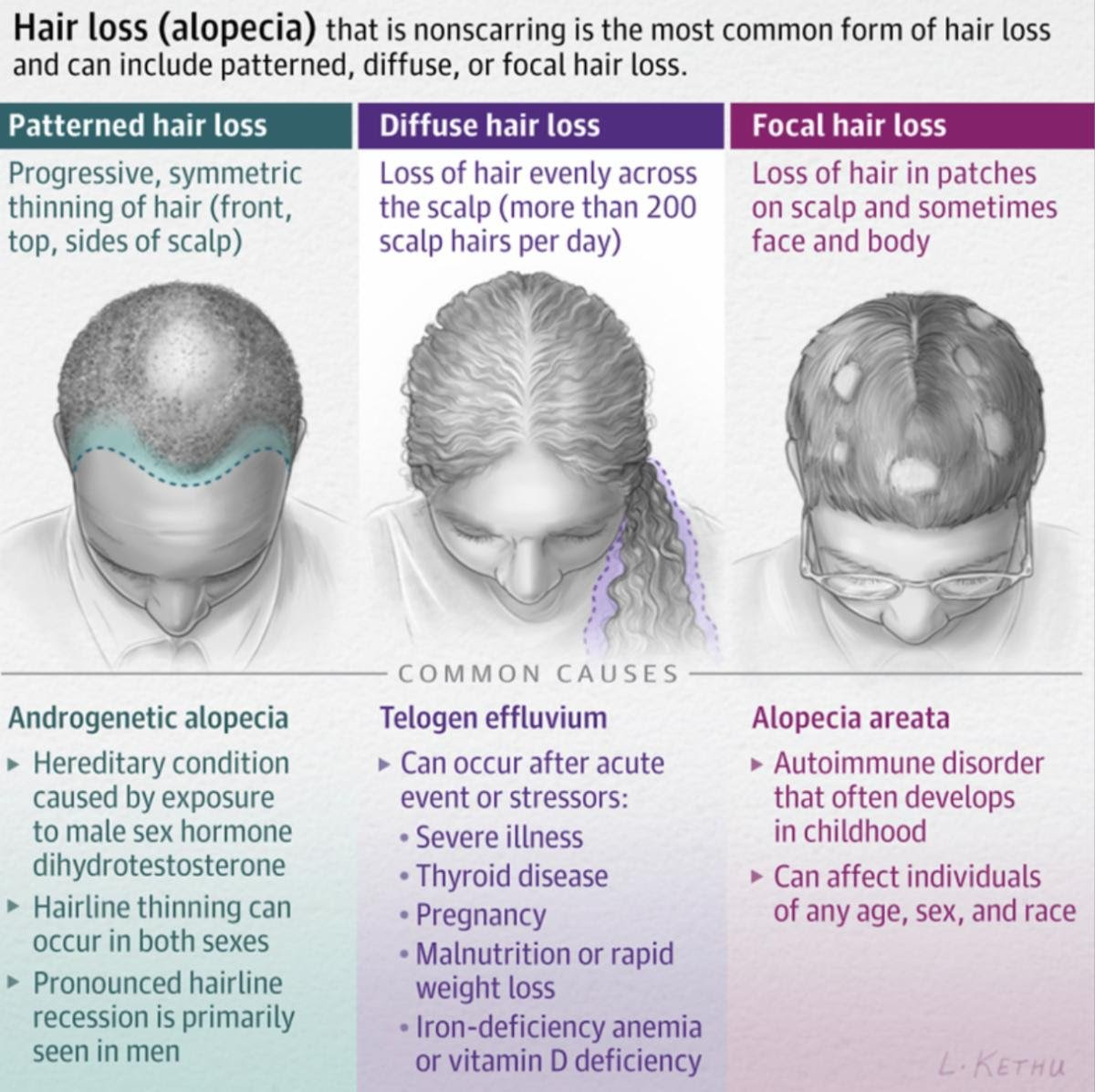
Temporary causes of hair loss like chronic irritation of the scalp, dandruff, or tight braids, locks, and twists are readily reversed by modifying hair care regimens.
Physical or emotional stress and even pregnancy can lead to a type of hair loss called telogen effluvium. Telugen effluvia typically occurs three months after the peak of an illness, stressor, or childbirth. and usually resolves on its own as hair follicles cycle new hair where old hair was shed.
More commonly, though, hair loss is multi-factorial and a stressful event unmasks a biological, hormonal hair loss termed androgenic alopecia, also known as male- or female-patterned hair loss. Patterned hair loss presents differently among biological genders and gender identities depending on hormonal influences. However, treatments for male and female patterned hair loss have never been as wide-ranging and readily available as they are today.
Treatments range from virtually risk-free preventive measures like topical over-the-counter medications to small doses of oral medications (some FDA-approved and some not) with a slightly higher risk of side effects, but often a higher reward. These include the FDA-approved finasteride and off-label use of old blood pressure medications like minoxidil and spironolactone.
Procedures gaining traction in the field of hair loss include platelet-rich plasma (PRP) that takes advantage of growth factors in one’s own blood and a new technology called platelet-rich fibrin matrix (PRFM) that keeps growth factors hanging around the hair follicles longer than PRP.
Though herbs and nutraceuticals are gaining popularity, some have high levels of naturally occurring molecules that may prolong the diagnosis of a thyroid disorder or heart attack, while others contain ingredients that can interact with medications or prevent the blood from naturally clotting. Unfortunately, none of these are regulated by the FDA.
Other high-end alternative treatments impose expensive, multi-step hair care regimens that can cost more than treatments with proven efficacy.
Establishing a relationship with your doctor is important for successfully treating hair loss. Dr Jack Levy will work closely with you and your primary physician to find treatments that best suit your goals with a safe, effective, and holistic approach.
A 31-year-old male with more than five-year history of androgenic alopecia. The patient was treated for 1 year with oral finasteride and topical minoxidil. Complete recovery of his youthful hairline was achieved.
A 43-year-old male with a greater than 10-year history of androgenic alopecia was treated for 6 months with a specifically compounded topical solution, formulated by Dr. Jack Levy, as well as an initial loading regimen of PRP/PRFM.
Notice the smaller area of alopecia over the vertex scalp as well as the more subtle reduction of the scalp “show through” over the top of the scalp. The patient can expect only one to two annual in-office treatments lasting 10 to 15 minutes each to maintain his results.
36-year-old female only 6 months after monthly PRP (platelet-rich plasma) treatments and topical minoxidil. She now requires only one 15-minute treatment every 6 months as maintenance.
To schedule a consultation with Dr. Levy, please call (646) 962-3376 (DERM)
Dr. Jack Levy is a double board-certified cosmetic dermatologic surgeon.
*Permission was given from all patients to publish.

